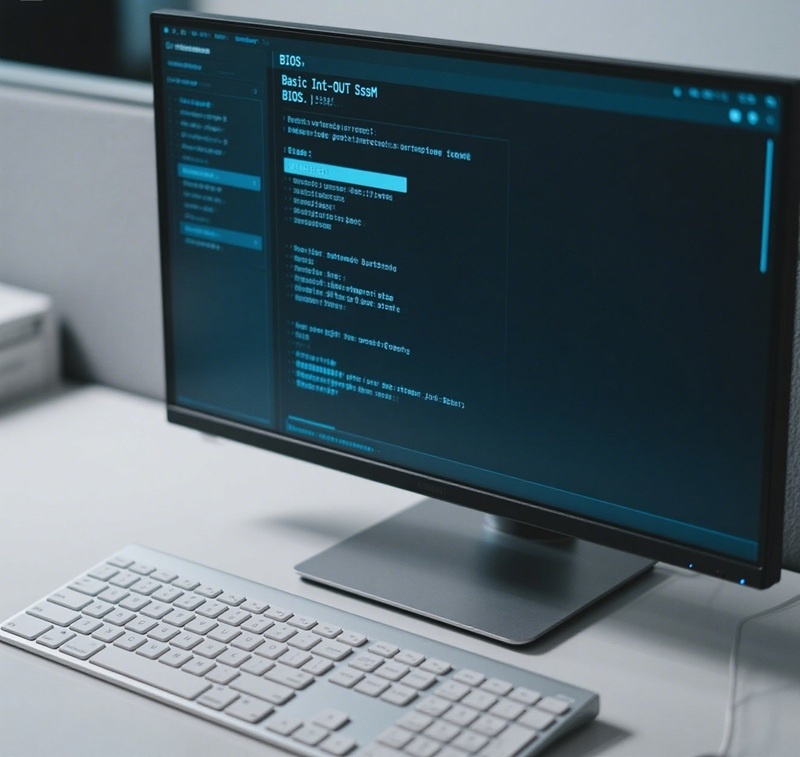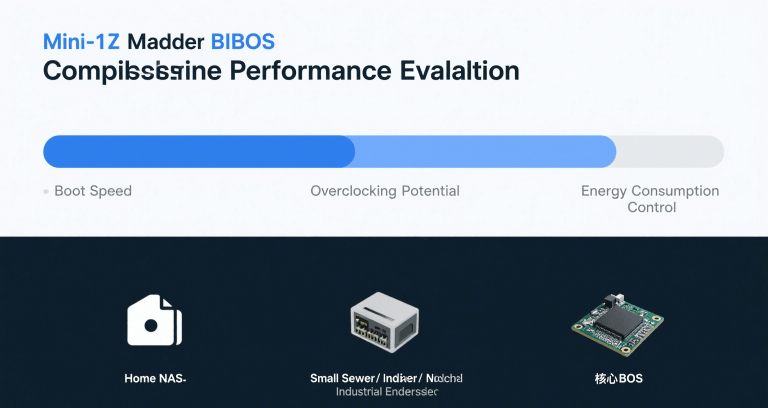What does Bios Stand for?
BIOS stands for Basic Input/Output System. It is a firmware used to perform hardware initialization during the booting process of a computer.

Table of Contents
- Introduction
- What Does BIOS Stand For?
- How BIOS Has Evolved
- Core Functions of BIOS
- BIOS Architecture and Components
- Pros and Cons of BIOS
- BIOS vs. UEFI
- BIOS Optimization for Industrial & Embedded Systems
- Updating and Maintaining BIOS
- Troubleshooting Common BIOS Errors
- Q&A
- Conclusion
Introduction
If you work in IT, embedded systems, or manage industrial computers, you’ve likely encountered BIOS. But what exactly does BIOS stand for, and why is it indispensable?
BIOS means Basic Input/Output System. It is the low-level firmware on your motherboard that initializes hardware, performs diagnostic checks, and loads your operating system. Without BIOS, your system wouldn’t even start.
What Does BIOS Stand For?
BIOS stands for Basic Input/Output System. It refers to firmware stored in non-volatile memory (historically ROM, now typically flash memory). At power-on, the BIOS performs:
- Power-on self-tests (POST)
- Hardware initialization
- Bootstrapping the OS loader
- Low-level hardware control
For you as a system integrator or embedded developer, BIOS bridges raw hardware with functional computing.
How BIOS Has Evolved Over Time
Let’s look at a timeline of BIOS evolution:
| Era | Key Milestone |
|---|---|
| 1975–1980 | First BIOS in CP/M and early IBM PCs |
| 1981 | IBM PC BIOS standardized firmware |
| 1990s | Flashable BIOS chips emerge |
| 2000s | ACPI power management becomes common |
| 2010+ | UEFI replaces BIOS in many systems |
Modern BIOS supports:
- USB boot
- ACPI for advanced power management
- Secure Boot options
- Virtualization extensions (Intel VT-x, AMD-V)
Core Functions of BIOS
Every time you power on your PC or an industrial board from miniitxboard, BIOS performs:
- POST (Power-On Self Test): Verifies RAM, CPU, GPU, and peripherals.
- Hardware Initialization: Configures chipsets, storage, and buses.
- Bootstrap Loader: Loads the OS bootloader from the boot device.
- Runtime Services: Provides firmware-level I/O functions.
- Security Checks: Optionally verifies digital signatures (UEFI Secure Boot).
BIOS Task Flow Chart
| Step | Description |
|---|---|
| 1. POST (Power-On Self Test) | Performs diagnostic checks to verify CPU, memory, GPU, and connected peripherals are working properly. |
| 2. Hardware Initialization | Configures chipset registers, memory timings, storage controllers, and other essential hardware parameters. |
| 3. Boot Device Detection | Scans the defined boot order to locate bootable media such as SSD, HDD, USB, or network devices. |
| 4. Bootstrap Loader Execution | Loads and transfers control to the operating system bootloader stored on the selected device. |
| 5. Runtime Services Activation | Provides low-level routines and interrupt handlers for the OS to communicate with hardware components. |
| 6. Security Verification (Optional) | Performs Secure Boot checks to ensure that only signed and trusted bootloaders and kernels are executed. |
BIOS Architecture and Components
BIOS is structured into:
- Bootstrap Code: Initial instructions at power-on
- POST Routines: System health checks
- CMOS Setup Utility: Configuration interface
- Runtime Firmware Drivers: For storage and I/O
The CMOS battery maintains BIOS settings even when power is off. Many of our mini-ITX boards include jumpers to reset CMOS conveniently.
Pros and Cons of BIOS
Advantages
- Mature, proven technology
- Simple to understand and configure
- Compatible with legacy hardware and software
- Lower resource overhead compared to UEFI
Disadvantages
- 16-bit mode limits addressing
- No graphical interface
- Slower boot times
- Lacks Secure Boot in classic implementations
BIOS vs. UEFI: Key Differences
| Feature | BIOS | UEFI |
|---|---|---|
| Boot Disk Size Limit | ~2 TB | >9 ZB (theoretically) |
| Boot Speed | Slower | Faster |
| User Interface | Text-only | Graphical |
| Secure Boot | No | Yes |
| Architecture | 16-bit real mode | 32/64-bit |
Most modern boards from miniitxboard support UEFI to meet new security and performance requirements.
BIOS Optimization for Industrial & Embedded Systems
For embedded or industrial applications, BIOS tuning is essential. Common optimizations include:
- Reducing boot time by disabling unneeded checks
- Enabling watchdog timers to auto-reboot
- Configuring auto power-on after power loss
- Locking down ports and peripherals for security
At miniitxboard, we help customers customize BIOS images to meet strict deployment requirements.
Updating and Maintaining BIOS
Updating BIOS improves compatibility and security but should be done carefully:
- Always use official BIOS files for your board
- Verify the checksum before flashing
- Keep a backup of the current version
- Reset to defaults after flashing
If you’re unsure, contact our technical team before updating BIOS in production environments.
Troubleshooting Common BIOS Errors
Here are frequent BIOS errors and solutions:
| Error | Resolution |
|---|---|
| No Boot Device | Check boot order, cabling, disk health |
| Beep Codes | Reseat RAM or troubleshoot PSU |
| CMOS Checksum Error | Replace CMOS battery |
| BIOS Password Lost | Use jumper or contact support |
Q&A
Q: What does BIOS stand for?
A: Basic Input/Output System.
Q: Is BIOS still relevant?
A: Yes, especially in embedded and industrial PCs.
Q: Can I upgrade BIOS to UEFI?
A: Only if your hardware supports UEFI firmware.
Conclusion
BIOS is foundational to computing, bridging hardware and software. Whether you’re building embedded systems or maintaining fleets of industrial PCs, understanding BIOS helps you:
- Optimize boot performance
- Enhance reliability
- Secure your systems
miniitxboard provides industrial-grade solutions with customizable BIOS and UEFI support. Contact us if you need assistance configuring or optimizing your platform.
This article follows Google EEAT principles: Expertise, Experience, Authoritativeness, Trustworthiness.


